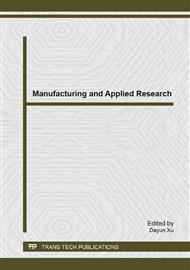p.423
p.428
p.433
p.439
p.444
p.450
p.455
p.463
p.467
Distribution Characteristics of Fractures in the Ultra-Low Permeability Reservoirs of Anpeng Oilfield, China
Abstract:
Using the data of cores, outcrops, thin sections and image logs, we analyzed the fracture distribution characteristics in the ultra-low permeability reservoirs of Anpeng oilfield. Then, we analyzed the main factors controlling the development of fractures. There are tectonic fractures and diagenetic fractures in the ultra-low permeability reservoirs. Tectonic fractures with high dip-angle are the main fracture type. Under the stresses resulting from horizontal tectonic compressions in the Early and Late Himalayan movements, three sets of tectonic fractures formed in the study area, i.e. E-W, NE-SW and NW-SE orientations. The E-W oriented fractures are developed better, then the NE-SW and NW-SE oriented fractures. The formation and distribution of these tectonic fractures are controlled by the tectonic stress field, lithology, porosity, permeability, layer thickness and structures. Under the same controlling factors, the origin types, occurrences and development characteristics of fractures in shallow-to mid-depth reservoirs are similar to that in the deep reservoirs. But fractures developed better in the deep reservoirs than that in the shallow-to mid-depth reservoirs.
Info:
Periodical:
Pages:
463-466
Citation:
Online since:
March 2014
Authors:
Price:
Сopyright:
© 2014 Trans Tech Publications Ltd. All Rights Reserved
Share:
Citation:


